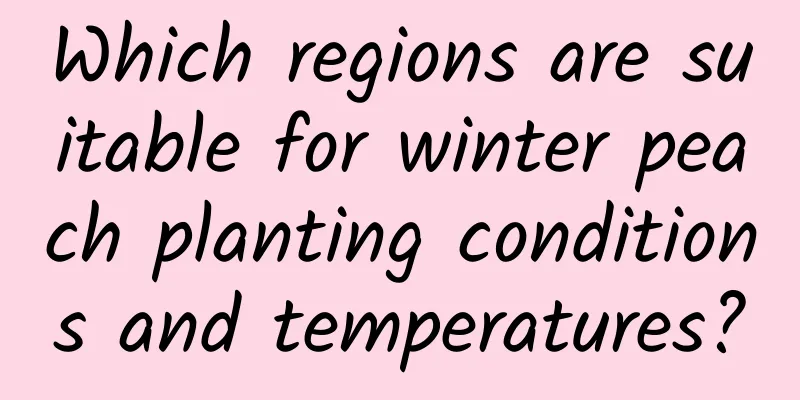How to grow hibiscus potted plants well? Hibiscus home cultivation methods and precautions

|
Hibiscus is suitable for growing in a warm and humid environment, and has certain requirements for soil, light, temperature, water, and nutrients. Hibiscus can survive in poor soil or alkaline soil. Therefore, hibiscus potted plants are relatively easy to grow and are more suitable for indoor cultivation at home. How to grow hibiscus at home1. Soil Hibiscus needs a wide range of soil conditions to grow, whether it is poor soil or alkaline soil, it can withstand it. But soft, fertile acidic soil is more conducive to its growth, it can absorb a lot of nutrients from there, and grow faster. 2. Lighting It is suitable for planting in a place with sufficient light, but do not place it in direct sunlight. Diffused light is more conducive to its growth, especially in the hot summer, when the temperature is too high and the light is too strong, it needs to be directly protected from the sun. Avoid it from withering and dying due to rapid evaporation of water. 3. Temperature Hibiscus has good cold resistance, but needs to grow under constant temperature conditions, so the suitable temperature is between 18-25℃. 4. Watering Hibiscus is suitable for warm and humid environment, so it has a greater demand for water. You can always keep its soil moist. In the hot summer, it can also be watered more. When there are too many rainy seasons, you should also pay attention to the problem of waterlogging. 5. Fertilization Since phosphorus can promote the growth of branches and leaves and the firmness of roots and stems, phosphorus is mainly used during the growth period. Nitrogen can also be used, but it does not play a dominant role. Therefore, when the buds are budding and flourishing, phosphorus fertilizer is mainly used. 6. How to survive the winter In winter, you need to move the hibiscus indoors. If you place it on the balcony, it is best to cover it with a protective film at night. Make sure the hibiscus has six hours of sunlight a day and the room should be ventilated. Prune the hibiscus before winter and cut off diseased branches, dead branches, and branches that grow too vigorously. Things to note when growing hibiscus1. Pests If the environment is not suitable during the maintenance process, it is easy to be infected by pests. Common pests are red spiders, moths, etc. Once found, spraying treatment should be carried out as soon as possible. You can choose dichlorvos or dimethoate emulsion for treatment. At the same time, change the maintenance environment, ventilate more, and provide appropriate temperature and humidity. 2. Diseases In addition to pests, brown spot disease and leaf blight are also prone to occur. Spray Bordeaux liquid, then remove the diseased leaves and burn them. As long as it is treated in time, it can be cured. |
Recommend
Can jasmine be saved if it has withered? How can it be saved?
1. Can it be saved? Generally speaking, jasmine f...
How to cultivate cyclamen during its dormant period
1. Reduce watering When it is in its dormant peri...
What to do if the leaves of peacock arrowroot turn yellow
1. Too much light symptom The peacock plant prefe...
How long is the growth cycle of licorice?
Introduction to Licorice Growth Artificially cult...
What are the cultivation methods and precautions of Million Heart Chlorophytum
How to grow million heart spider plants Million H...
If you haven’t grown plum, orchid, bamboo and chrysanthemum, you are not a real flower grower!
1. Plum Blossom Proud but not vulgar He once expl...
Can lychees be grown in Chengdu?
Can lychees be grown in Chengdu? Chengdu is a pla...
How to prolong the flowering period of bougainvillea
1. The flowering period of this plant Its floweri...
How to use Akadama
1. What is Akadama? Akadama is formed by the accu...
Can fragrant lilies be placed in the bedroom?
1. No poison The flowering period of fragrant lil...
How to make Chlorophytum comosum bloom and how to propagate it by cuttings
1. How to make the pot explode 1. Soil: If you wa...
What to do if you overwater tomatoes? Symptoms of overwatering
1. How to deal with excessive watering Although i...
Are orchids suitable for indoor cultivation?
1. More suitable Orchids are very suitable for gr...
How to plant tricolor bindweed
Planting method Sowing time: It can be done betwe...
How long is the growth cycle of Codonopsis pilosula?
Introduction to the growth of Codonopsis pilosula...









